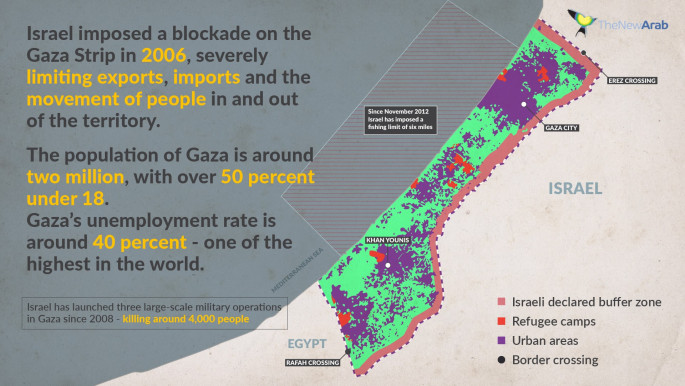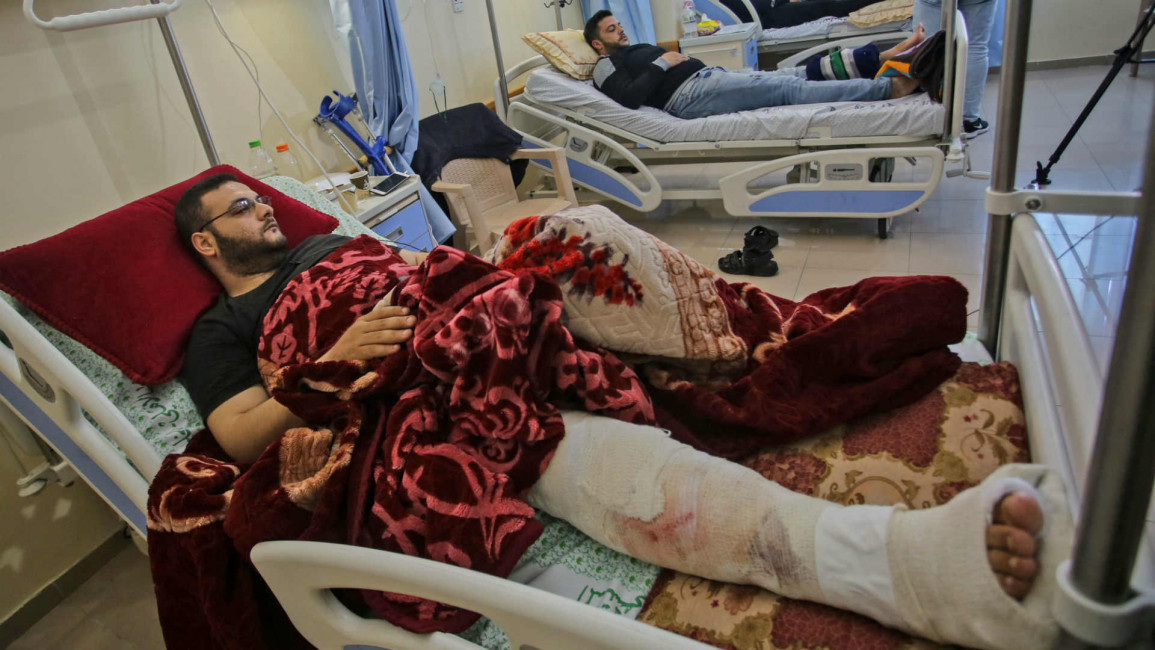Follow us on Facebook, Twitter and Instagram to stay connected
'42 knees in one day': Israeli snipers brag about deliberately crippling Gaza protesters
One of the six snipers interviewed, identified by the name Eden, discussed his time in the Golani infantry brigade with Israeli newspaper Haaretz, and claims to remember exactly how many knees he's hit.
"I kept the casing of every round I fired," he told the newspaper.
"I have them in my room. So I don't have to make an estimate – I know: 52 definite hits."
Eden was instructed to "repel" Palestinian demonstrators who approached the Gaza border fence. Gaza's protesters have taken to the border area every week for months on end as part of the "Great March of Return".
The sniper said he had the most hits in his battalion and that he was referred to as the "killer".
"When I came back from the field, they would ask, 'Well, how many today?'"
"You have to understand that before we showed up, knees were the hardest thing to rack up. There was a story about one sniper who had 11 knees all told, and people thought no one could outdo him. And then I brought in seven-eight knees in one day."
 |
The large scale protests, which called for the right of return of refugees and an end to Israel's crippling decade-long blockade, began on March 2018 and peaked on May 14 when the US moved its embassy in Israel from Tel Aviv to the contested city of Jerusalem.
Over 61 Palestinians were killed and 2,400 injured on that day, while tens of thousands protested along the besieged strip's border.
At least 348 Palestinians have been killed in total by Israeli fire since the weekly Great Return March protests began, the majority during the demonstrations, according to an AFP toll.
A further 7,800 people have been wounded by gunfire, according to the World Health Organisation.
Eden's interview sheds light on the experience of Israeli snipers on the border. Haaretz approached dozens of snipers but only six of them, all of which were discharged from the IDF, agreed to be interviewed. The names of the snipers were changed in the report.
Eden told the newspaper he broke the "knee record" during the demonstration on May 14, 2008, the day the US embassy in Jerusalem was inaugurated.
"On that day, our pair had the largest number of hits, 42 in all. My locator wasn't supposed to shoot, but I gave him a break, because we were getting close to the end of our stint, and he didn't have knees," Eden said.
"In the end you want to leave with the feeling that you did something, that you weren’t a sniper during exercises only. So, after I had a few hits, I suggested to him that we switch. He got around 28 knees there, I'd say," he added.
Eden remembers shooting his first knee in the early period of the protests in "which you were allowed to shoot a major inciter only if he was standing still".
|
After receiving authorisation to shoot with the battalion commander, deputy, company commander crowded round him, he shoots and remembers "the view of the knee in the crosshairs, bursting open".
'Roy and Itay'
Roy served as a sniper in the Givati Brigade until his discharge a year and a half ago. He told Haaretz that the hits he remembers most drew large audiences.
"There was pressure, because the battalion commander had showed up, and everyone was on our case. There was a Palestinian who looked like he was about 20, who didn't stop moving around... I clearly remember being worried about missing his leg – and then feeling relief that I made a precise hit."
Itay was a sniper in the ultra-Orthodox Netzah Yehuda Battalion. "I saw a guy who was about to light a Molotov cocktail. In a case like that you don't do calculations. I got on the radio, described the target and got an 'authorized'... I shot at the knee and he fell."
The snipers told Haaretz the ideal position to hit a Palestinian, which is the "kneecap". "If you see blood, that's not a good sign, because you probably hit too high," Itay said.
But another sniper interviewed said the kneecap is not a desirable place to hit.
"The objective is to cause the inciter minimal damage, so he will stop doing what he's doing. So I, at least, would try to aim at a fattier place, in the muscle region," he said.
According to IDF protocol, a minor shouldn't be considered a major inciter at the protests, the newspaper reported.
"The goal is not to hit minors, but a Molotov cocktail is a Molotov cocktail, and the bottle doesn't know whether the person holding it is a man of 20, a teenager of 14 or a kid of 8," Itay said.
Read more: An Israeli sniper ruined my football career
One of the snipers said it can be hard to ascentain the age of the demonstrators.
"Sometimes it really is hard to tell the difference [between minors and adults]. You look at facial features, height, body mass. Clothing is also a certain index. The younger ones are usually wearing T-shirts. But listen, a 16-year-old can cause you harm, too. If he presents a threat, the age parameter is not necessarily relevant," he said.
Israel has come under widespread criticism for its use of live fire against unarmed Palestinian protesters in Gaza.
Earlier this year, the United Nations said there was evidence that Israel committed crimes against humanity in responding to the protests.
Israeli snipers have targeted people identifiable as children, health workers and journalists.
"Israeli soldiers committed violations of international human rights and humanitarian law. Some of those violations may constitute war crimes or crimes against humanity," the chair of the UN Independent Commission of Inquiry said in a statement.
 |
Agencies contributed to this report.


![President Pezeshkian has denounced Israel's attacks on Lebanon [Getty]](/sites/default/files/styles/image_684x385/public/2173482924.jpeg?h=a5f2f23a&itok=q3evVtko)



 Follow the Middle East's top stories in English at The New Arab on Google News
Follow the Middle East's top stories in English at The New Arab on Google News


